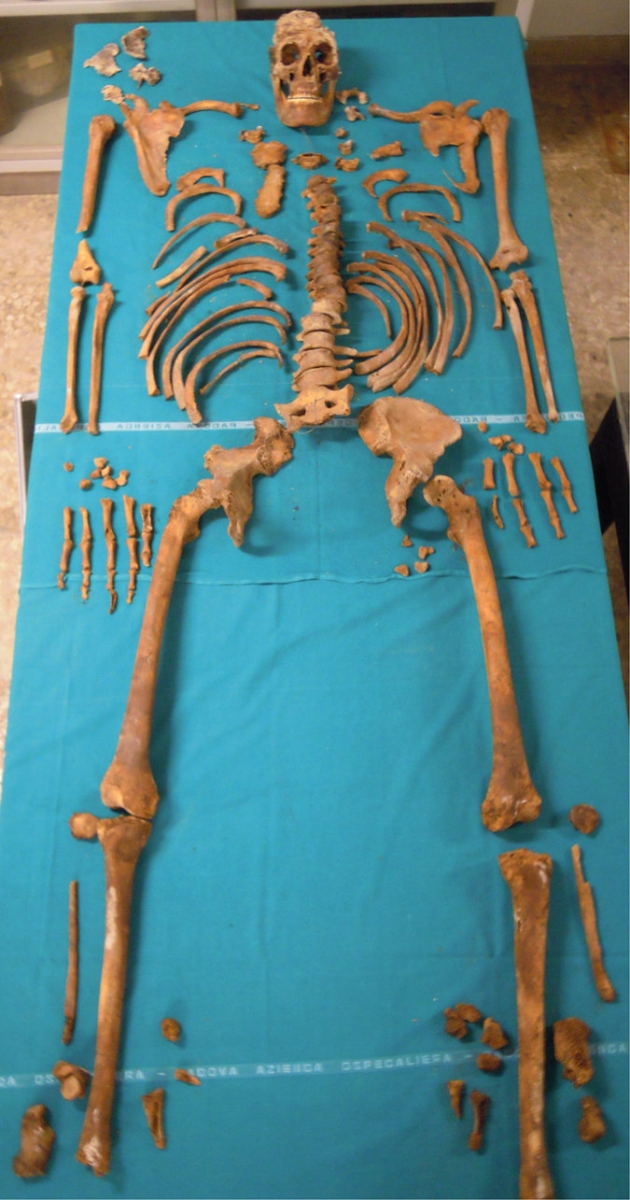The bones of famous castrato Gaspare Pacchierotti have been examined to reveal the procedure’s effect on the body.
Castrati were the musical superstars of their day. Unlike countertenors who sing in falsetto, these were male singers castrated before puberty to preserve their unbroken voice within the range of a soprano. They attracted legions of fans, including the social elite such as the aristocracy and royalty, and seized the attentions of composers, patrons and impresarios. Farinelli, one of the most famous castrati, met with Kings and Emperors and was personally headhunted by Handel. Another famous castrato, Gaspare Pacchierotti, performed at the inauguration of La Scala in 1778, visited Marie Antoinette in Paris and was later forced to take a break from his retirement to perform for Napoleon.
Given that the gruesome practice of castration is no longer considered ethically justifiable (for obvious reasons), scientific information on the long-term effects of the procedure on the human body is scarce. However, in 2013, Pacchierotti’s remains were exhumed to study how castration – and his career as an opera singer – affected his body. Farinelli’s remains have also been examined, but due to the level of decomposition are of a far less precious scientific value. The results of this investigation have now been published in the journal Scientific Reports, under the title Occupational markers and pathology of the castrato singer Gaspare Pacchierotti (1740–1821). This investigation is the first time the whole skeleton of a castrato has ever been studied carefully, and it provides fascinating insights into the singer’s life and health.
 Pachierotti’s skeleton
Pachierotti’s skeleton
Pacchierotti was born in Fabriano, Italy, in 1740, but little is known of his early life, except that he was castrated before the age of 12. Nonetheless, he became one of the most famous castrati, both in Italy and overseas.
When Pacchierotti travelled to London, the Earl of Mount Edgcumbe, described him as “decidedly the most perfect singer it ever fell to my lot to hear.”
“Pacchierotti’s voice was an extensive soprano, full and sweet in the highest degree: his powers of execution were great,” wrote Edgcumbe, “I have often seen his auditors, even those the least musical, moved to tears while he was singing.” London’s Public Advertiser described him as “superior to any singer heard in this country since Farinelli.”
After a long and successful career, Pacchierotti retired to Padua where he died at the age of 81 and was buried in a tomb under the floor of a little chapel.
His remains were well preserved, aside from some damage to the skull caused by water damage and the presence of plaster. A team of researchers from the University of Padua Medical School, led by Alberto Zanatta, examined Pacchierotti’s skeleton using a variety of anthropological measurements, including Computed Tomography (CT) analysis and X-ray Microtomography (XMT) to assess how castration had affected his body.
“These findings are very significant because it is the first time that they can be observed in the remains of a castrato“
Pacchierotti, like many castrati, was very tall (the researchers estimated his height at 191cm) – a result of delayed fusion in the leg bones. Another common castrato ailment is osteoporosis – the change in hormones caused by castration leads to a decrease in bone mineral density. There was evidence of this in both Pacchierotti’s back, neck and arms.
“Pacchierotti’s cervical vertebrae were all strongly eroded with signs of osteophytic lipping in the body,” the researchers found, “because of osteoporosis and of continuous movements of head and neck during singing exercises. These conditions can be considered as an occupational marker for the singers, as it was confirmed by Pacchierotti’s vertebral conditions. These findings are very significant because it is the first time that they can be observed in the remains of a castrato.”
The researchers could not simply chalk the evidence of osteoporosis up to old age, as the relative absence of osteoporotic microfractures suggested a gradual adaption to the condition over a long period.
Other evidence pointed clearly to Pacchierotti’s career as a singer. “Another important marker found in Pacchierotti’s remains was the insertion of three important respiratory muscles on the second ribs, the scalenus posterior, which elevates the second rib, the serratus anterior, which can lift the ribs and assist in respiration, and the serratus posterior superior, that elevates second to fifth ribs and aids deep inspiration.” These changes have also been found to occur in the bodies of modern singers, as have erosions to the cervical vertebrae similar to those found in Pacchierotti.
“This research describes, for the first time, the occupational markers and the hormonal effect of castration on a whole skeleton of a castrato singer integrating the knowledge about castration in men and animals and its effects on the skeleton,” the researchers said. “It also provides an enlightening description of the occupational markers of professional singers.” The research has built on the knowledge gained from examination of incomplete castrato skeletons – such as that of Farinelli – and has shed more light on the long-term physical changes caused by both castration and the physical stress of an operatic career.











Comments
Log in to join the conversation.